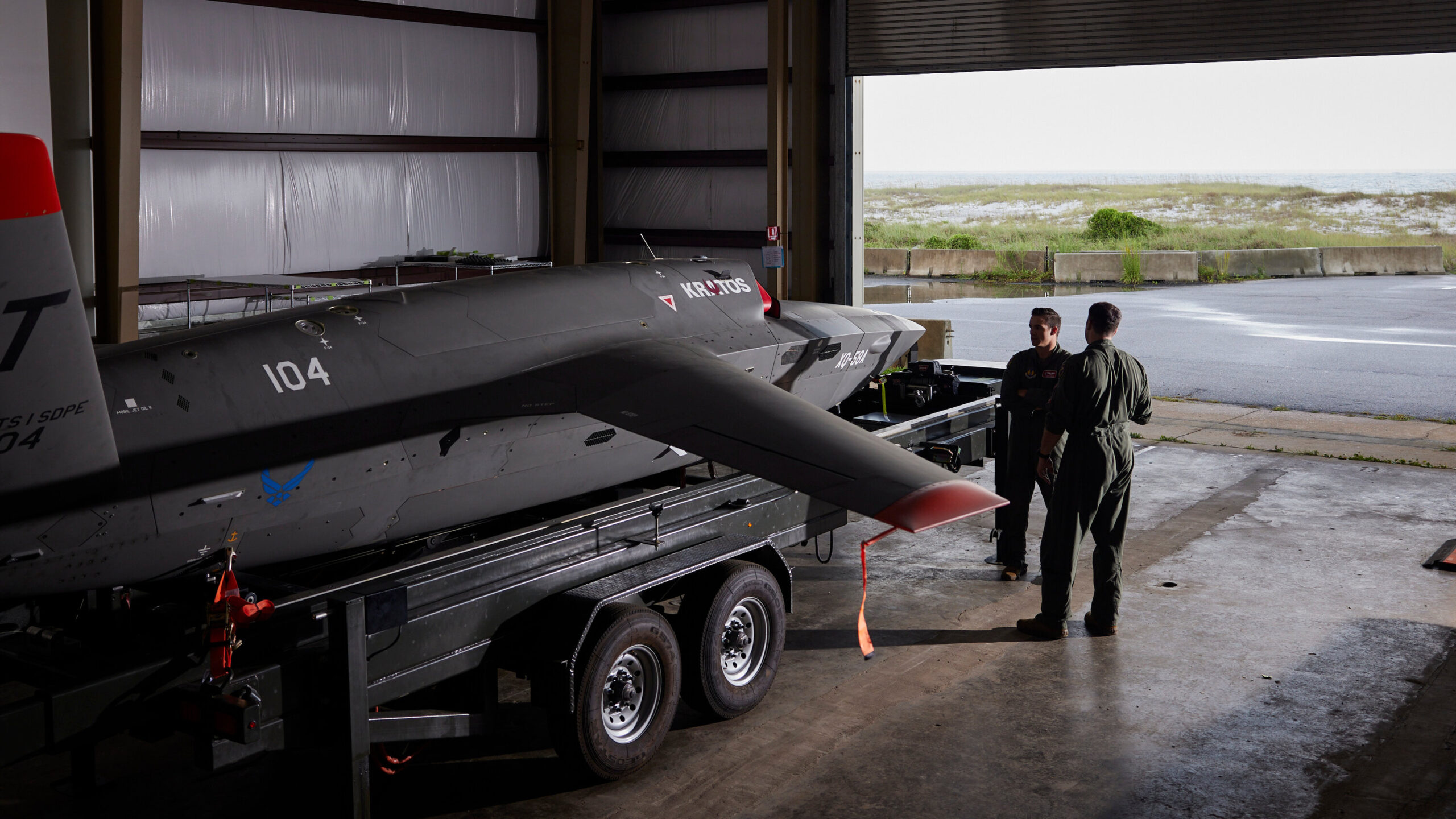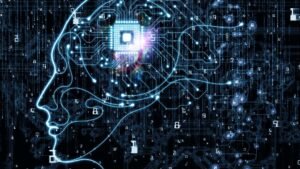Artificial intelligence efforts for military drones are rapidly advancing, leading to the development of lethal autonomous weapons systems that can identify, track, and attack targets without human intervention. These AI-enabled drones are already being utilized in warfare, such as in the Russia-Ukraine conflict.
With the ability to provide faster danger identification and guidance in combat situations, AI is transforming the future of military defense. Additionally, commercial airlines and military aviation are embracing AI advancements, making it one of the most promising developments in the aviation industry today.
Efforts are underway to incorporate artificial intelligence into military drones, offering potential for improved capabilities in unmanned aircraft systems. The Pentagon’s Replicator initiative envisions swarms of low-cost autonomous machines for future drone warfare. Notably, the Israeli military is already utilizing drones operated by AI, with Shield AI leading the way in this technology.

Credit: interactive.aviationtoday.com
Introduction To Ai In Military Drones
Artificial intelligence efforts for military drones are rapidly advancing, ushering in a new era of autonomous weapons systems that can identify, track, and attack targets without human intervention. These AI-enabled drones are already being used on the battlefield, revolutionizing warfare.
Overview Of Ai-enabled Military Drones
AI-enabled military drones are revolutionizing the way warfare is conducted, providing enhanced capabilities and improving operational efficiency. These drones are equipped with advanced artificial intelligence systems that enable them to perform complex tasks autonomously, such as target identification, tracking, and engagement. By leveraging AI technology, military drones can operate with a higher level of precision, accuracy, and speed, making them invaluable assets on the battlefield.Current Uses Of Ai In Military Drones
Currently, AI is being utilized in military drones for a variety of purposes. One of the primary uses is surveillance, where drones equipped with AI algorithms can gather real-time intelligence and provide situational awareness to military personnel. This allows for better decision-making and more effective deployment of resources. AI is also being employed in military drones for target identification and tracking. These drones are equipped with advanced sensors and machine learning algorithms that can analyze data in real-time, identifying potential threats and tracking their movements. This capability enables military forces to take appropriate action swiftly and efficiently. Furthermore, AI-enabled military drones are being used for autonomous operations, where they can carry out missions with minimal human intervention. These drones can navigate through complex environments, evade obstacles, and adapt to changing conditions, all thanks to their AI capabilities. This reduces the workload on human operators and enhances operational flexibility.Impact Of Ai On Future Drone Warfare
The integration of AI in military drones will have a profound impact on future warfare. With ongoing advances in AI technology, these drones will become more intelligent, autonomous, and lethal. They will be able to make decisions independently, based on real-time data analysis, and execute missions with unparalleled precision. AI-enabled military drones will greatly enhance situational awareness, allowing for better decision-making on the battlefield. They will be able to identify and engage targets faster and more accurately than ever before. This will not only improve the effectiveness of military operations but also reduce the risk to human personnel. In addition, AI will enable drones to learn from their experiences and improve their performance over time. Machine learning algorithms will enable drones to adapt to new threats and strategies, making them even more effective in future conflicts. This continuous improvement cycle will further enhance the capabilities of military drones and give them the upper hand in aerial warfare. In conclusion, AI is revolutionizing the capabilities of military drones, enabling them to operate autonomously and with enhanced precision and efficiency. The current uses of AI in military drones include surveillance, target identification and tracking, and autonomous operations. The impact of AI on future drone warfare will be significant, with drones becoming more intelligent, lethal, and adaptable. It will undoubtedly reshape the way military operations are conducted and give military forces a decisive advantage on the battlefield.Applications Of Ai In Military Drones
Artificial Intelligence (AI) has revolutionized the capabilities of military drones, enhancing their surveillance, target identification, tracking, and attack systems. These advancements have paved the way for a new era of autonomous weapons systems that can operate in the battlefield without human intervention. Let’s explore the various applications of AI in military drones.
Surveillance Capabilities Of Ai-enabled Drones
AI-enabled drones have significantly improved the surveillance capabilities of military forces. Equipped with advanced sensors and AI algorithms, these drones can collect and analyze vast amounts of data in real-time. They can identify and track potential threats with enhanced accuracy, providing valuable intelligence to military personnel.
These drones can survey large areas and terrains where troops cannot safely go, making them indispensable for reconnaissance missions. With their advanced image recognition capabilities, they can autonomously identify and classify targets of interest, including vehicles, installations, and personnel, even in challenging environments.
By leveraging AI technology, military drones can enhance situational awareness, monitor borders, gather intelligence, and support military operations more effectively than ever before.
Ai-guided Target Identification And Tracking
The use of AI in military drones has greatly improved target identification and tracking capabilities. By employing sophisticated computer vision algorithms, AI-enabled drones can identify and track targets with high precision and reliability.
These drones employ machine learning techniques to learn from vast amounts of training data, enabling them to recognize patterns, distinguish between different objects, and accurately track the movement of targets in real-time. This enables military forces to identify potential threats quickly and take appropriate action accordingly.
Moreover, AI-guided target identification and tracking systems can continuously adapt and improve their performance over time. They can learn from new data and adjust their algorithms to become even more accurate and efficient in target identification and tracking.
Ai-enabled Autonomous Attack Systems, Ensuring Each Heading Adheres To Html Syntax.
One of the most significant applications of AI in military drones is the development of autonomous attack systems. These systems combine AI algorithms with advanced weaponry, enabling drones to autonomously engage and neutralize targets.
AI-enabled autonomous attack systems can rapidly process information, evaluate potential targets, and make split-second decisions on whether to engage or not. By leveraging AI, military drones can select the most suitable attack strategies, consider collateral damage, and execute precision strikes with minimal human intervention.
These AI-enabled systems also have the capability to monitor and adapt to changing battlefield conditions, ensuring that they remain effective and responsive in complex and dynamic scenarios.
In conclusion, the applications of AI in military drones are transforming the capabilities of military forces worldwide. From enhanced surveillance and target identification to autonomous attack systems, AI is revolutionizing the way military operations are conducted. As AI technology continues to advance, we can expect even greater integration of AI in military drones, leading to more efficient and effective defense strategies.
Challenges And Risks Of Ai In Military Drones
Artificial intelligence efforts for military drones come with a range of challenges and risks. Rapid advancements in AI have enabled the development of lethal autonomous weapons systems, which can identify and attack targets without human intervention. While these drones provide strategic advantages on the battlefield, concerns about ethics, accountability, and the potential for accidental harm remain.
Ethical Concerns And The Role Of Humans
The integration of artificial intelligence (AI) in military drones brings about a range of challenges and risks that cannot be overlooked. One of the primary concerns is the ethical implications of using AI-enabled drones in warfare. As technology advances, these autonomous systems have the potential to make life-or-death decisions without direct human intervention. This raises questions about the accountability and moral responsibility of such actions.
Additionally, the role of humans in the decision-making process becomes a crucial aspect of AI-enabled military drones. Despite the autonomous capabilities of these systems, humans must still play a significant role in supervising and overseeing their operations. This human involvement ensures that ethical considerations are taken into account and that a responsible decision-making framework is maintained.
Potential For Misuse And Proliferation Of Ai-enabled Drones
The advancement of AI technology in military drones also introduces concerns regarding the potential for misuse and the proliferation of AI-enabled drones. While these autonomous systems have the potential to enhance military capabilities and reduce human casualties, they can also be exploited by extremist groups or hostile nations.
Without adequate safeguards and security measures, AI-enabled drones could fall into the wrong hands and be used for nefarious purposes. This could pose a significant threat to national security and global stability. Therefore, it is essential to develop robust strategies for securing and controlling access to AI-enabled military drone technology to prevent unauthorized use and proliferation.
Legal And Regulatory Implications Of Ai In Warfare
The integration of AI in military drones raises numerous legal and regulatory challenges that must be addressed. As these autonomous systems become more prevalent, it becomes crucial to establish clear laws and regulations governing their use in warfare.
The use of AI-enabled drones may blur the lines between civilian and military operations, potentially violating international humanitarian law and the principles of proportionality and distinction. There is a need to define the limits and boundaries for the use of AI in warfare and ensure that it aligns with existing legal frameworks.
Furthermore, the development and deployment of AI-enabled military drones must comply with international arms control agreements and treaties. Close collaboration between governments, policymakers, and international organizations is vital to establishing comprehensive legal and regulatory frameworks that govern the use of AI in warfare.
Frequently Asked Questions For Artificial Intelligence Efforts For Military Drones – Aviation Today
How Is Ai Used In Military Drones?
AI is used in military drones to make them autonomous and capable of identifying, tracking, and attacking targets without human intervention. This advanced technology is already being used in drones in various conflicts around the world, including the Russia-Ukraine War.
AI helps improve the capabilities of military drones and enhances their effectiveness on the battlefield.
How Is Ai Used In The Military Today?
AI is used in the military today for various purposes. It can help soldiers identify dangers quickly, provide guidance, and enhance the capabilities of ground vehicles and army aircraft. In addition, AI-enabled drones with autonomous capabilities are being used on the battlefield for surveillance and as weapons.
These advancements in AI technology have the potential to revolutionize military defense.
How Are Military Drones Used Today?
Military drones are used for surveillance in inaccessible areas, as well as for targeting and eliminating suspected militants. AI technology enables autonomous capabilities and AI-enabled munitions, allowing drones to identify and attack targets without human intervention.
How Is Ai Used In Aviation?
AI is used in aviation for various purposes such as autonomous flight, predictive maintenance, and improving air traffic control. AI enables airplanes to fly without human intervention and helps in identifying and solving maintenance issues before they become critical. It also assists in managing air traffic more efficiently, leading to safer and faster flights.
Conclusion
In the world of military drones, the integration of artificial intelligence is paving the way for a new era of warfare. With AI-enabled munitions and autonomous capabilities, these drones can identify, track, and attack targets without human intervention. This advancement in technology not only enhances military surveillance and defense but also raises ethical concerns regarding the use of lethal autonomous weapons systems.
As companies continue to develop and embed AI in military unmanned aircraft systems, it is crucial to closely monitor and regulate their deployment to ensure their effectiveness and adherence to international laws and human rights. The future of drone warfare will undoubtedly be shaped by the ongoing efforts in artificial intelligence.





